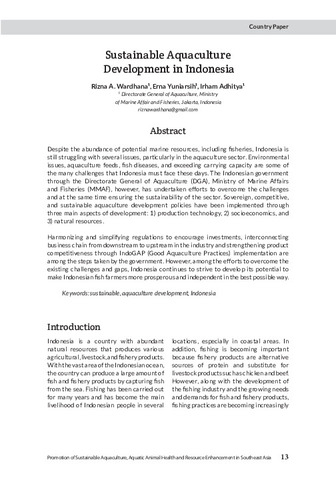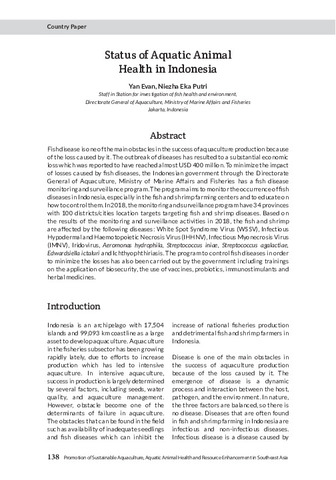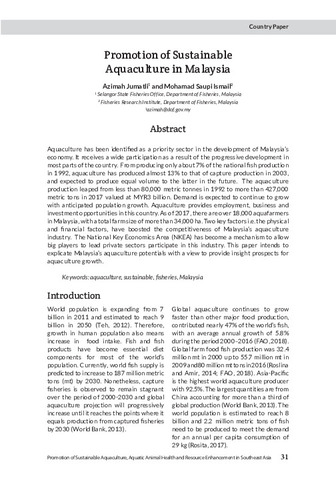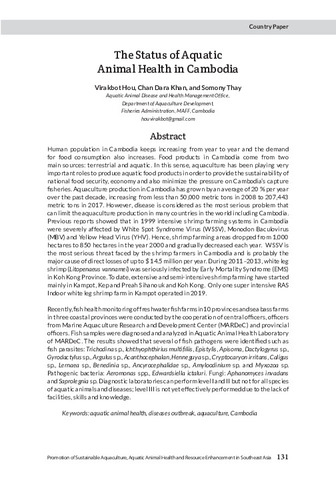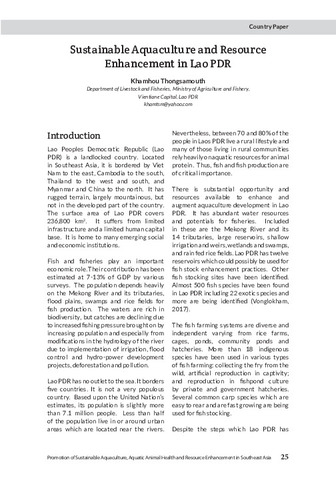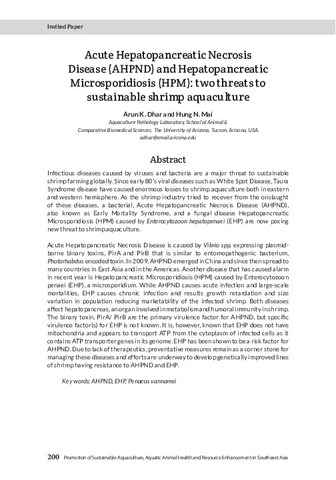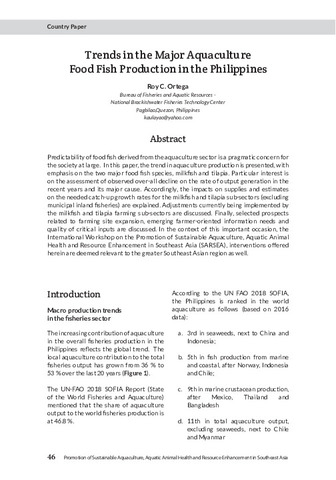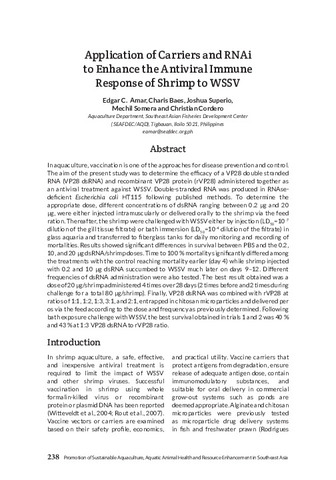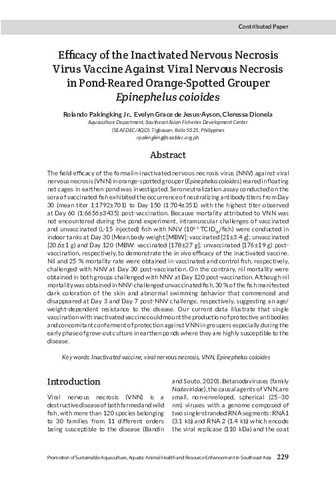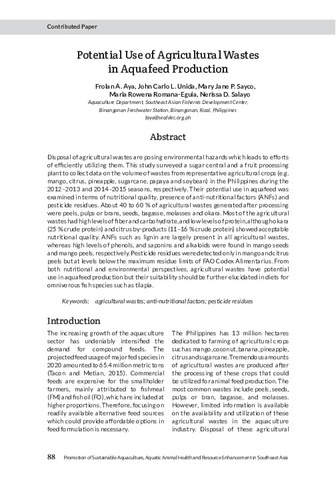Search
Now showing items 1-10 of 31
Sustainable aquaculture development in Indonesia
(Aquaculture Department, Southeast Asian Fisheries Development Center, 2021-12)
Despite the abundance of potential marine resources, including fisheries, Indonesia is still struggling with several issues, particularly in the aquaculture sector. Environmental issues, aquaculture feeds, fish diseases, ...
Status of aquatic animal health in Indonesia
(Aquaculture Department, Southeast Asian Fisheries Development Center, 2021-12)
Fish disease is one of the main obstacles in the success of aquaculture production because of the loss caused by it. The outbreak of diseases has resulted to a substantial economic loss which was reported to have reached ...
Promotion of sustainable aquaculture in Malaysia
(Aquaculture Department, Southeast Asian Fisheries Development Center, 2021-12)
Aquaculture has been identified as a priority sector in the development of Malaysia’s economy. It receives a wide participation as a result of the progressive development in most parts of the country. From producing only ...
The status of aquatic animal health in Cambodia
(Aquaculture Department, Southeast Asian Fisheries Development Center, 2021-12)
Human population in Cambodia keeps increasing from year to year and the demand for food consumption also increases. Food products in Cambodia come from two main sources: terrestrial and aquatic. In this sense, aquaculture ...
Sustainable aquaculture and resource enhancement in Lao PDR
(Aquaculture Department, Southeast Asian Fisheries Development Center, 2021-12)
Acute hepatopancreatic necrosis disease (AHPND)) and hepatopancreatic microsporidiosis (HPM):): Two threats to sustainable shrimp aquaculture
(Aquaculture Department, Southeast Asian Fisheries Development Center, 2021-12)
Infectious diseases caused by viruses and bacteria are a major threat to sustainable shrimp farming globally. Since early 80’s viral diseases such as White Spot Disease, Taura Syndrome disease have caused enormous losses ...
Trends in the major aquaculture food fish production in the Philippines
(Aquaculture Department, Southeast Asian Fisheries Development Center, 2021-12)
Predictability of food fish derived from the aquaculture sector is a pragmatic concern for the society at large. In this paper, the trend in aquaculture production is presented, with emphasis on the two major food fish ...
Application of carriers and RNAi to enhance the antiviral immune response of shrimp to WSSV
(Aquaculture Department, Southeast Asian Fisheries Development Center, 2021-12)
In aquaculture, vaccination is one of the approaches for disease prevention and control. The aim of the present study was to determine the efficacy of a VP28 double stranded RNA (VP28 dsRNA) and recombinant VP28 protein ...
Efficacy of the inactivated nervous necrosis virus vaccine against viral nervous necrosis in pond-reared orange-spotted grouper Epinephelus coioides
(Aquaculture Department, Southeast Asian Fisheries Development Center, 2021-12)
The field efficacy of the formalin-inactivated nervous necrosis virus (NNV) against viral nervous necrosis (VNN) in orange-spotted grouper (Epinephelus coioides) reared in floating net cages in earthen pond was investigated. ...
Potential use of agricultural wastes in aquafeed production
(Aquaculture Department, Southeast Asian Fisheries Development Center, 2021-12)
Disposal of agricultural wastes are posing environmental hazards which leads to efforts of efficiently utilizing them. This study surveyed a sugar central and a fruit processing plant to collect data on the volume of wastes ...

